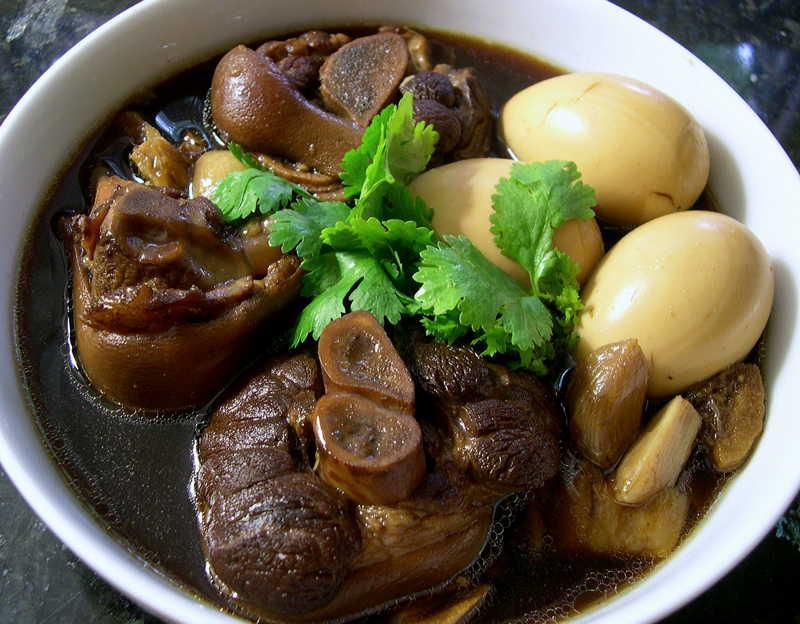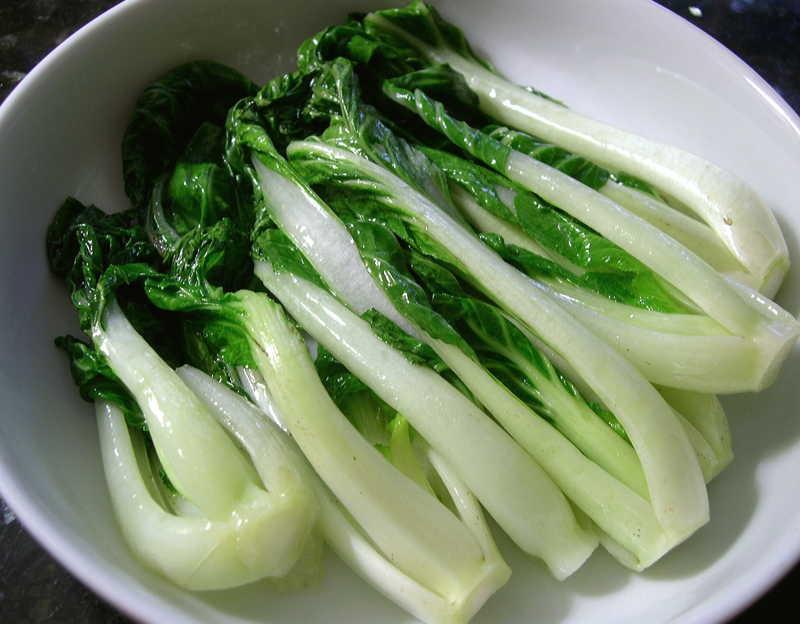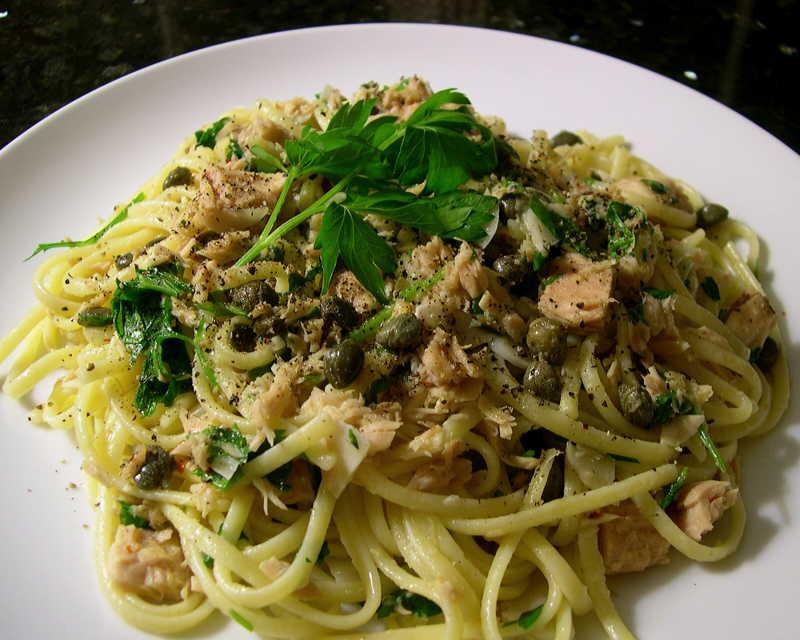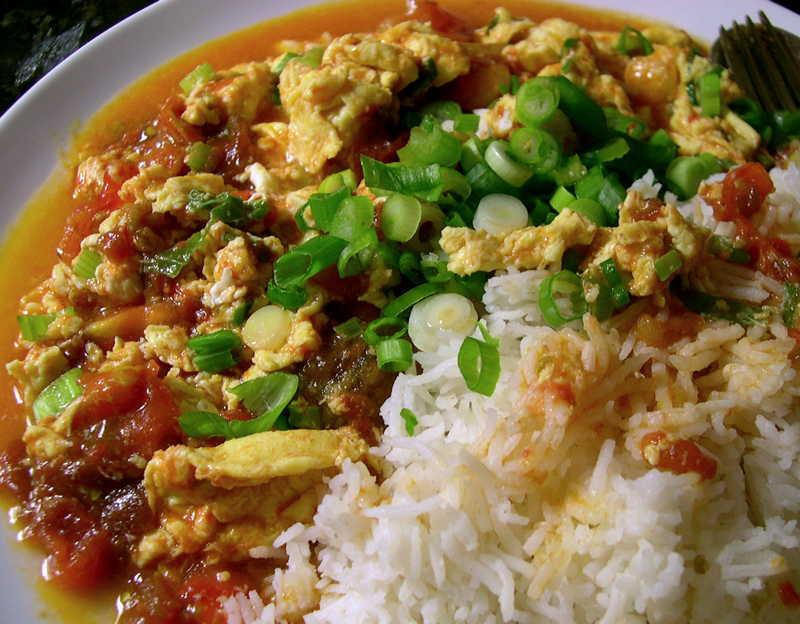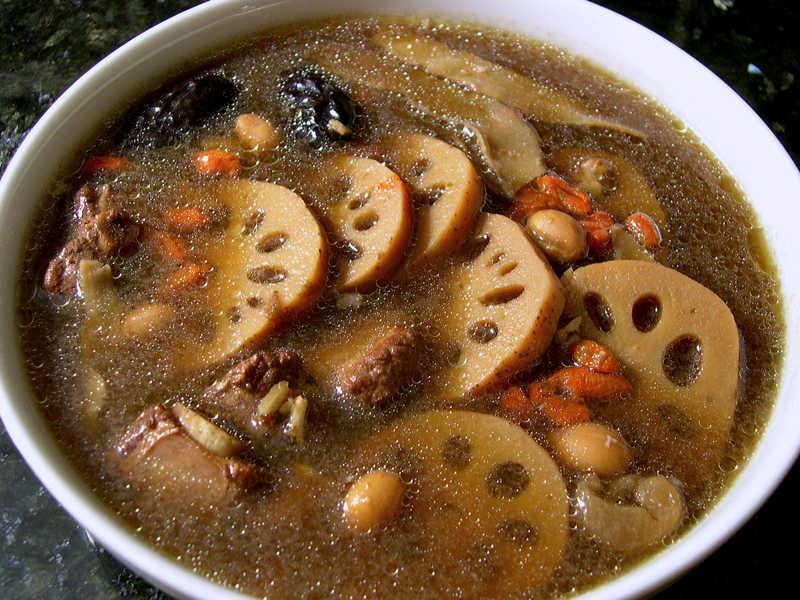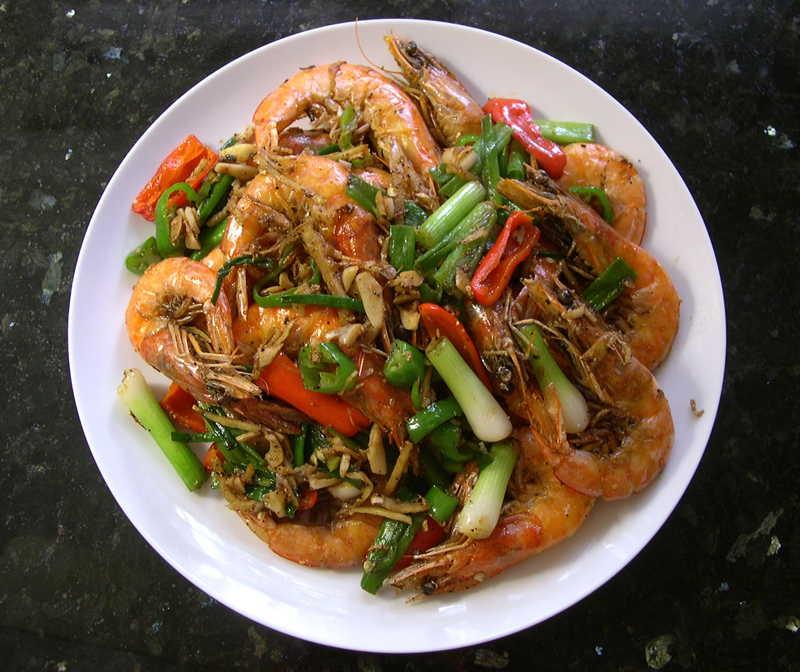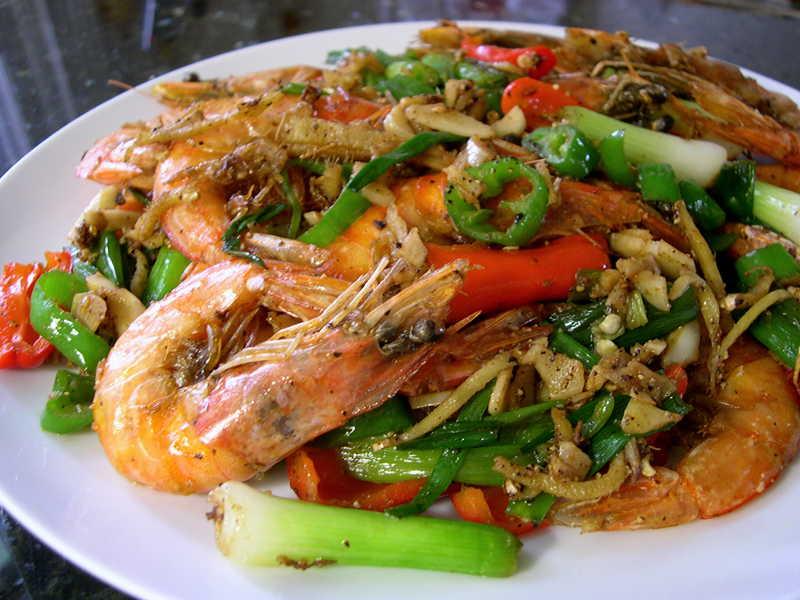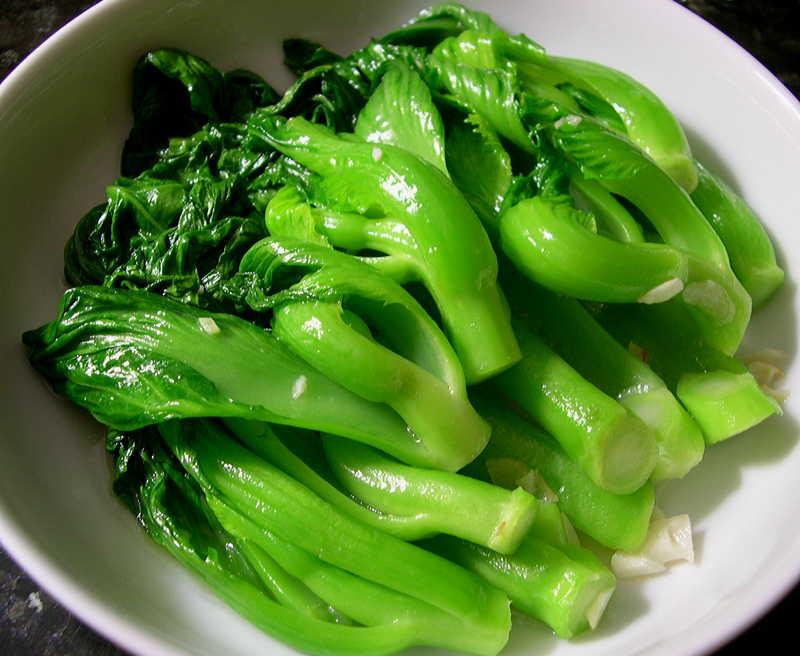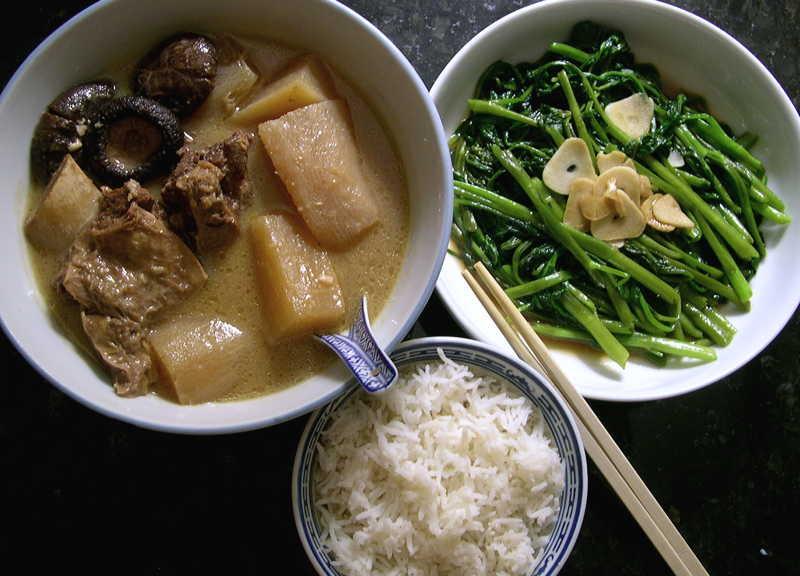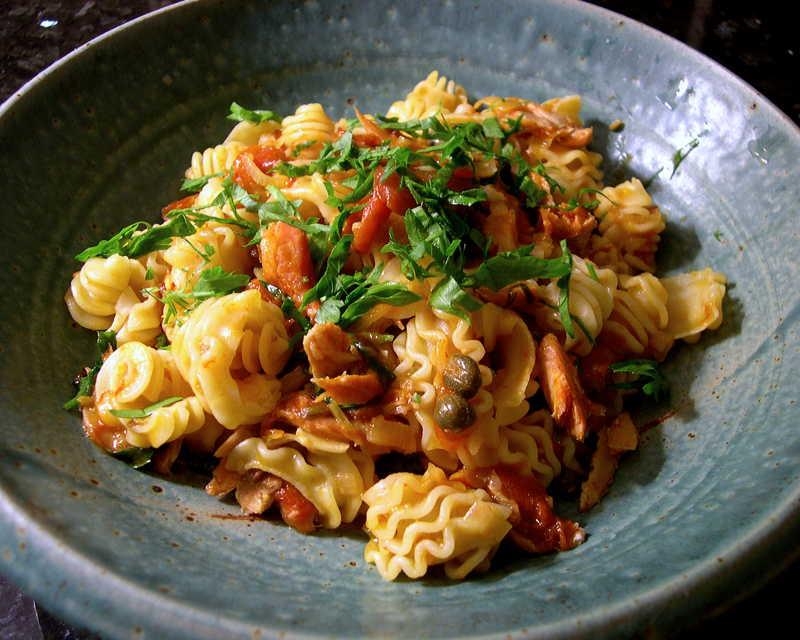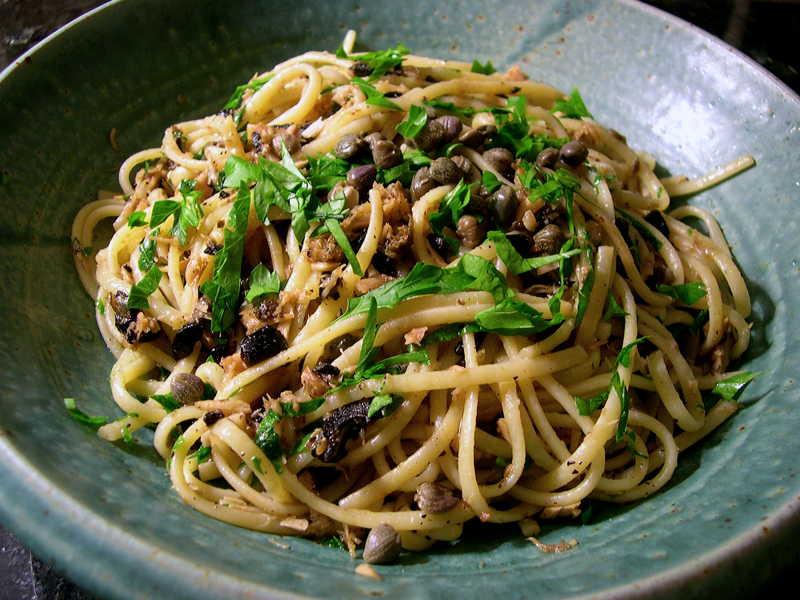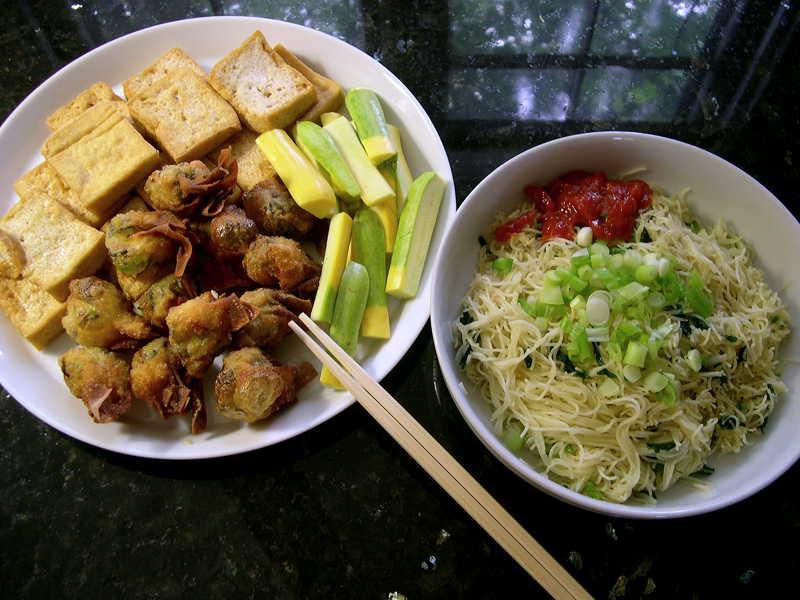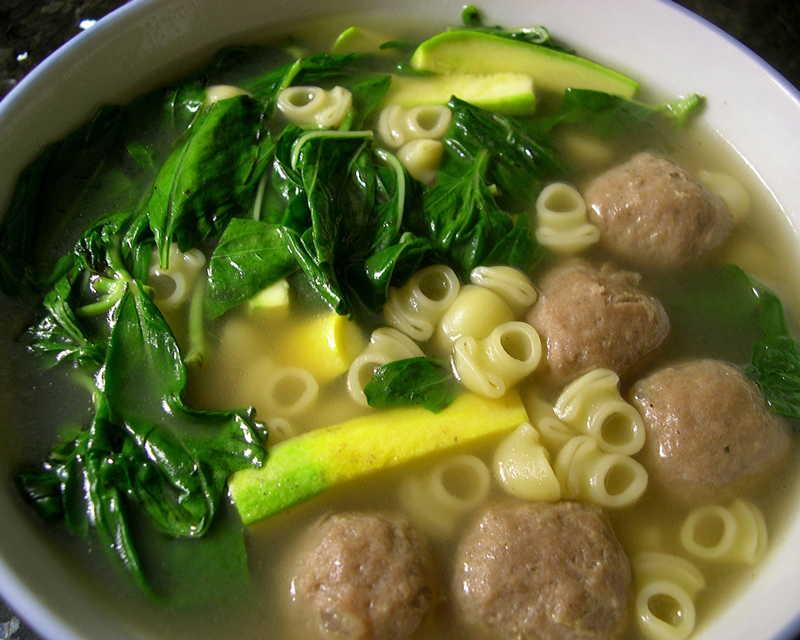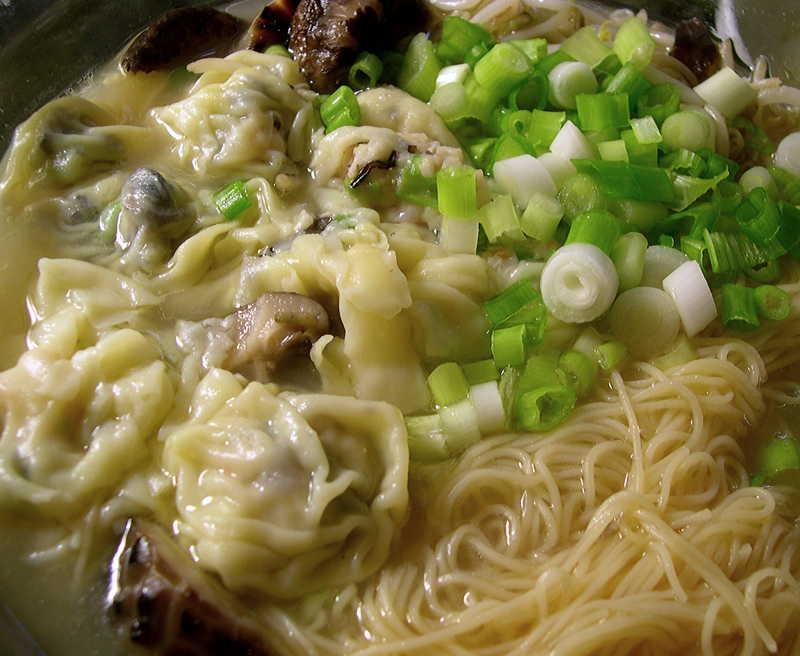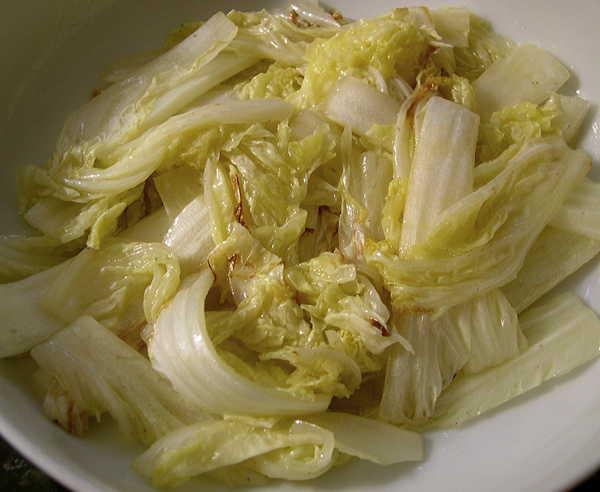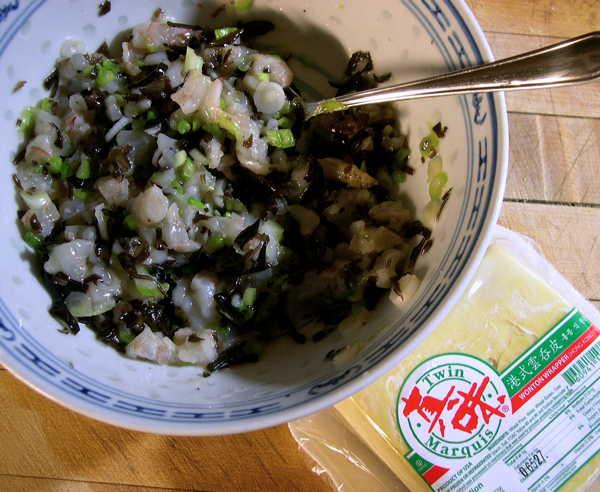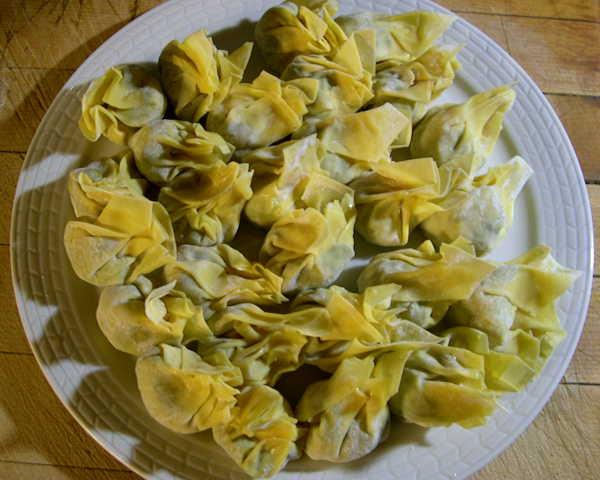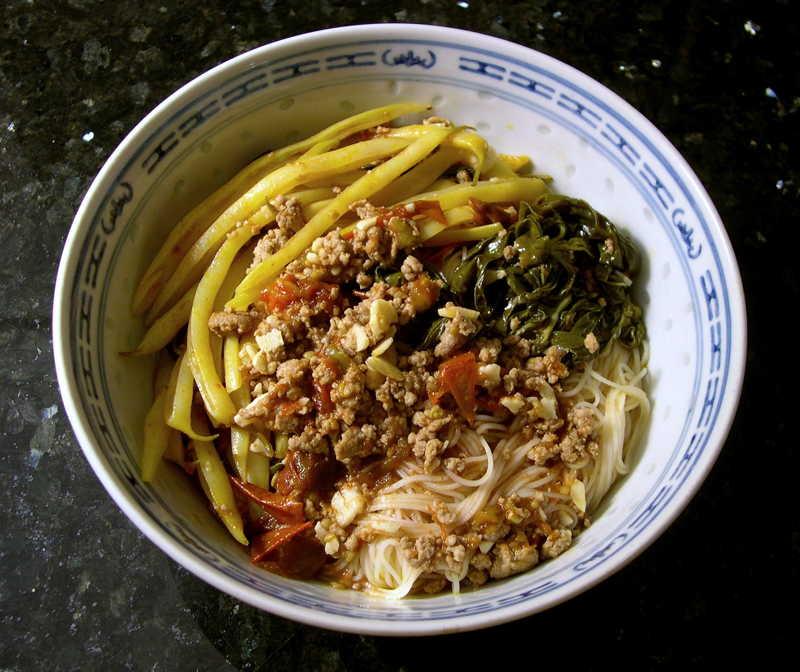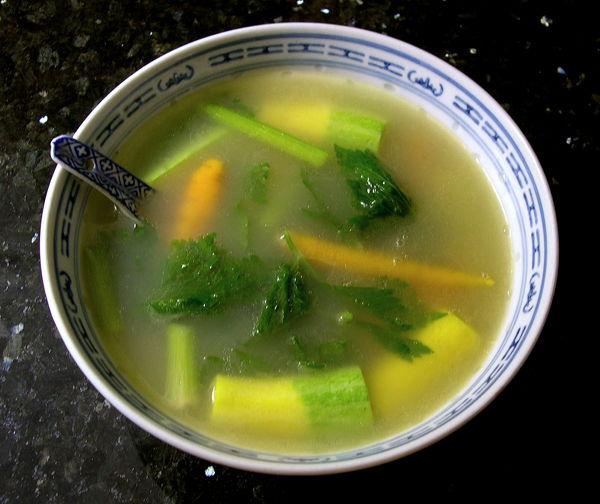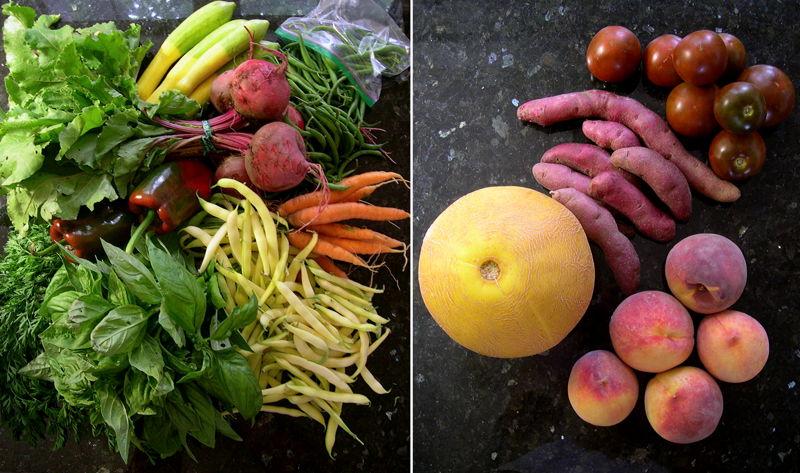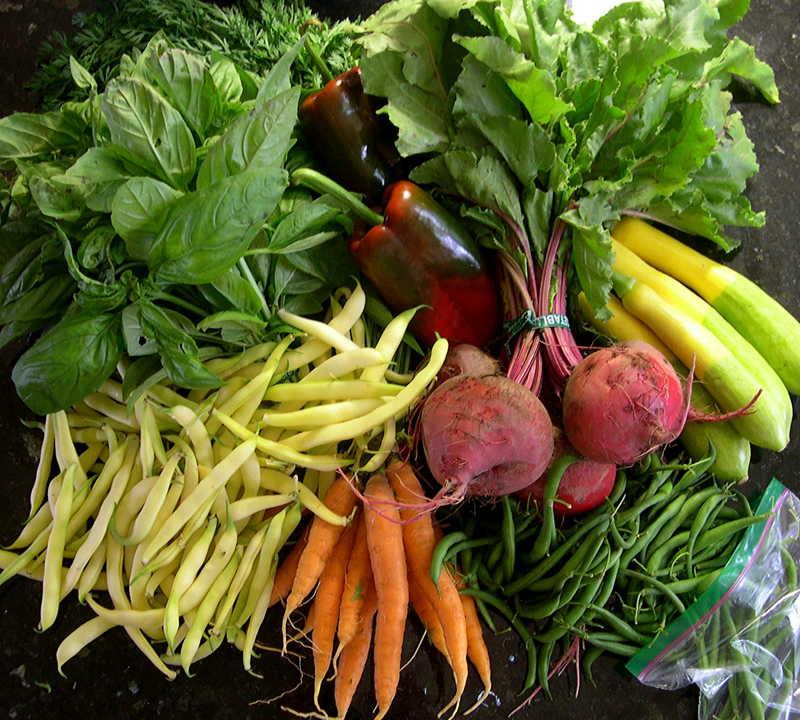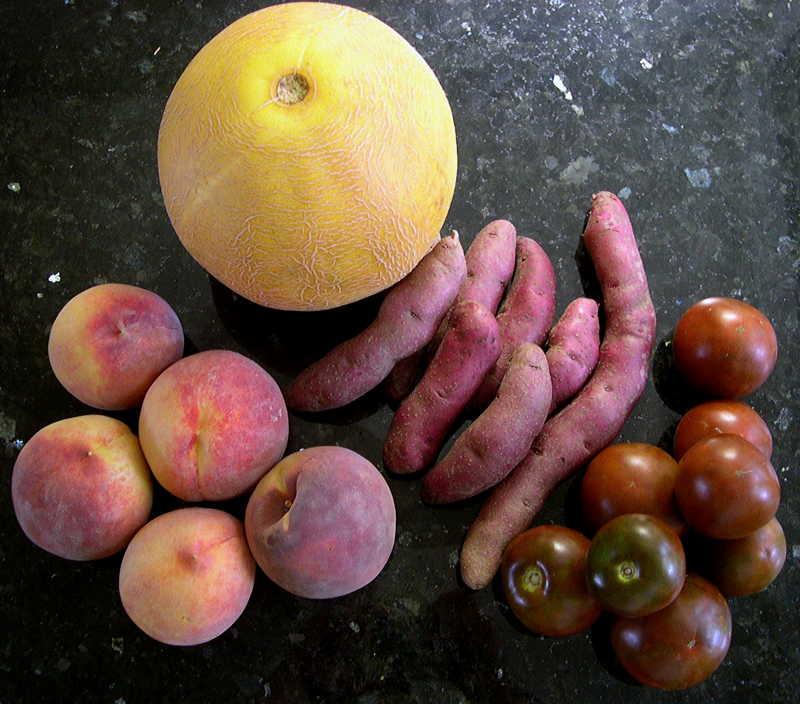-
Posts
3,810 -
Joined
-
Last visited
Content Type
Profiles
Forums
Store
Help Articles
Everything posted by huiray
-
Thanks, dcarch. Looks like I didn't answer you! Apologies. I simply soak/float them in a tub of water with plenty of "depth" of water beneath the plants, swish them around a bit; then wash them plant-by-plant under a moderately slow-running tap, parting the leaves down to the stem as needed or if needed. (There's usually not that many plants each time when I find I need to do similar things)
-
Here's keeping my fingers crossed for you, gfron1!
-
Well, yes and no regarding "creating" the sweet black vinegar. The "sweet black vinegar" traditionally used – a common brand is this one ( and another image here) especially for many folks from the Canton/Hong Kong tradition; and which I did not have on hand at the time (and seldom do) – is *quite* sweet, of thick consistency, and has definite cassia & star anise notes.¶¶ It is also much less acidic and more mellow than Chinkiang vinegar, with its own flavor profile too - so using Chinkiang vinegar plus sugar is in a sense playing games with the ingredients, even if I like Chinkiang vinegar in its own right. Note that any of the vinegars mentioned so far are different from ordinary (white) rice vinegar, or plain cheap black vinegar; and also different from Western-style vinegars which tend to be higher in acetic acid content and much sharper. I also used palm sugar plus the turbinado sugar - rather than plain castor sugar - because "sweet black vinegar" also has this caramel-y-like characteristic. I thought of using jaggery rather than the turbinado, but didn't...I really should have. I also didn't have true gula melaka on hand - I would have used THAT instead if I did have some. I also left the simmering pot uncovered for a while, adding water once or twice - to reduce the acetic acid content a bit. :-) As for my correcting the "sweetness level" in the latter stages with rock sugar - eh, I used that just for the hell of it. :-) If you try this dish and go with the Chinkiang vinegar plus sugar, use caramel-y sugars plus whatever else you may feel like and adjust as you go along as I mentioned. One might also cut back on the vinegar to start with. I might be inclined to toss in that cassia and star anise too, especially if you have not had something similar before, so that it might be more towards the traditional dish. NOTE that the dish *may* be somewhat of an acquired taste for some, and I can imagine that various folks in these parts would find it...very strange or unappealing. The traditional dish is also directed towards post-partum women in confinement recovering from childbirth - and uses a GREAT DEAL of ginger following the reasons for why the dish is made in the first place – for boosting the "heat" of the woman - according to the precepts of Chinese medicine. However, the dish is enjoyed by both men and women for the taste memory and its taste for its own sake – so the amounts of the ingredients including the amount of ginger used and others as well can and should be adjusted to suit one's preferences and desires.§§ NOTE also that many folks use the "sweet black vinegar" *but* cut it with a "normal" black vinegar --- both to reduce the sweetness as well as add a bit more sharpness to it. I'm sorry if all this is confusing, but perhaps it is a sort of explication of the various things that go on when one cooks "on the fly" and turns over in one's mind what goes on and into a dish. ¶¶ which is why I said that when I added cassia sticks and whole star anise to some iterations of the dish it approximated more what using "sweet black vinegar" at the beginning would have been, aside from the sugar content. §§ I'm not sure, but for this iteration I think I used - for maybe a pound-and-a-half of sliced pork hocks, something like just short of a half pound of root ginger. kayb, to answer your questions --- I *think* I used something like 2 "pieces"/'whorls" of palm sugar (Thai-type) plus maybe 3 (or 4?) semi-heaped tablespoons of turbinado sugar for what I think I started out with as about one-and-a-half cups or so of Chinkiang vinegar plus the initial starting equivalent amount of water. I added several large lumps of rock sugar plus some more turbinado sugar later; I guess you just simply have to taste it to your preference. Still, does that give you a ballpark idea of starting amounts? As for the hard-boiled eggs: I really "cheated" this time around - there wasn't really enough space in the main pot for me to add the eggs in so I turned the heat down to the lowest setting, scooped out enough ladles of the "sauce" into a small saucepan with the de-shelled hard-boiled eggs in them to cover them (plus a bit of water), simmered them as such for maybe 3-4 minutes, enough to "stain"them appreciably, then just dumped everything back into the main pot and brought everything back to a quick simmer before shutting off the heat. In various recipes out there folks have put in the eggs as far back as an hour before the end of cooking but that gives you pretty "hard" eggs. I just barely "hard-boil" the eggs I add in in my case, so they don't get too hard. Some people *like* them very firm. One's personal preferences come into play here. And no, please don't invoke MC notions of "perfectly cooked" eggs here - the situations are not comparable. BTW, to both kayb and Paul Bacino --- if you got yourself a bottle or two of Chinkiang vinegar one should keep in mind that the vinegar that really makes "hot and sour soup" pop (if you make it yourself one day) is Chinkiang vinegar, not ordinary rice vinegar. (And definitely not Western-type wine vinegar or white vinegar)
-
Paul, yes, that's right - the hocks are fresh, unsmoked, still slightly bloody. The fei sui treatment (the blanching and washing) is strongly recommended, and the coagulated bits and blobs including at the ends of the bones are rubbed off under the tap. I imagine you have found some stuff already about Chinkiang vinegar. One simply looks up "black vinegar" or "Chinkiang vinegar" and lots of stuff pours out. Looking up "black vinegar pork hocks" and variations thereof will also give you info on this dish, in a general sense, with many recipes -but which all have certain central components in common, of course. Traditionally, a kind of vinegar called "sweet black vinegar" is needed, not just "black vinegar". In my case with this iteration that I made I used recipe P50 in "madam choy's cantonese recipes"** (Epigram Books) as a jumping off point, and adjusted some of the quantities, used Chinkiang vinegar and added in some garlic. In the past with other iterations of this that I have made I've also put in star anise pods and/or stick cassia (not true cinnamon, which gets "lost" in this intensely-flavored and potent dish) which sort-of carries suggestions of using sweet black vinegar to start with. BTW, enough salt is needed, and *definitely* quite a bit of sugar if one is not using sweet black vinegar to start with - taste as you go along - otherwise the dish becomes very, very unbalanced in taste. The final dish is NOT "sweet" as one might think of a "dessert-like" dish. If one follows (or is concerned with) principles of Chinese medicine etc, then the type of sugar used is not immaterial ("heatiness" vs "cooling" properties ascribed to different forms of sugar :-) ) - but otherwise one need not be too concerned. ** One can get this now from Amazon, even.
-
Pork Hocks in Black Vinegar with Ginger. Pork hocks well-blanched in boiling water then cleaned under the tap and placed in a clean pot. Water & Chinkiang vinegar (1:1, to cover the hocks), lightly smashed ginger pieces (LOTS), palm sugar, turbinado sugar, salt, lightly crushed garlic cloves. Simmer. Adjust seasoning/salt/sugar (rock sugar), add water as needed. Add hard-boiled eggs almost at the end. Flash stir-fried long baby bok choy. (peanut oil, salt) Several bowls of white rice.
-
The rights to the photos is another area that should be clarified - if they discontinue the book, or even as it stands. Do they have the right to use the photos as they wish even if your photographer retains copyright? (Or has your photographer assigned the rights to you?)
-
Got a new jar of salted capers from Salinas today, as well as a bag of salted capers from Pantelleria. Linguine with tuna & capers. Tuna in olive oil [Ortiz] (undrained), garlic; salted capers [il Mongetto; from Salinas] (rinsed, soaked), hot red chile flakes; pasta cooking water, just-cooked linguine [De Cecco], parsley, lemon zest, lemon juice, more pasta cooking water, fold in/toss in pan. Black pepper, parsley garnish. (A Martha Stewart recipe. :-) )
-
Tomatoes with scrambled eggs (蕃茄炒蛋). White rice. Oil, scallions,eggs, Shaohsing wine, salt, white pepper, tomatoes, turbinado sugar, ketchup. Lotus root soup. Oil, garlic, pork riblets, salt, water, dried Chinese jujubes, dried Solomon's Seal rhizome slices, dried longan flesh, raw peanuts, dried honey jujube, lotus root slices, dried wolfberries.
-
Fresh longans are readily available in the USA at Chinese or E/SE Asian groceries, and various large "International-type" groceries/supermarkets, when in season. Ditto lychees. The sources for the fresh fruits include places like Florida, of course; but also places like Kenya, where lychees are widely grown for the export market.
-
Salt & Pepper Shrimp. Today's version. Garlic stir-fried baby kai choy (芥菜; mustard greens). Several bowls of white rice.
-
Basil, Japanese Trifele tomatoes, bicolor corn, mini red & orange sweet peppers, yard-long beans, Dragon Tongue beans, Siberian Red & Music garlic, chanterelles, red & yellow carrots, square donuts.
-
Asia Mart: Fuzhou flour vermicelli special grade [Lucky Swallow], ground pork, almond (puff pastry) wafers [K.W. Inc., NY, NY], sliced pork hocks, large-leaf type mustard greens (kai choy; 芥菜) (small plants!!), firm tofu [Hinochi], half a Chinese roast duck, Thai basil, coriander leaves, fresh flat rice noodles (hor fun) [Lee's Noodle Co.], frozen beef-tendon balls [Venus], canned sardines [Ligo], bone marrow (bulalo) flavor instant noodle bowls [Lucky Me! Supreme], instant noodles wheat gluten stewed duck flavor bowl [Little Cook], shrimp flavour instant noodle packs (Mì Lẩu Thái Hương Vị Tôm) [Vina Acecook], saté onion flavour instant noodle packs (Mì Hảo Hảo Sa Tế Hành) [Vina Acecook], nori maki arare [Asahi]. Viet Hua Food Market: Scallions/green onions, ong choy (rau muống), kai lan (芥蘭), long bok choy (small plants), mung bean sprouts, chicken wings (middle pieces only), fresh lotus roots, hot long green chillies, lemons, head-on large shrimp.
-
• Beef short ribs (from farmers' market) slow-braised (stovetop) w/ lots of garlic lightly browned in rice bran oil, crushed white peppercorns, mutenka shiro miso, fermented tofu ("wet bean curd" in rice wine &etc), Chinese "tea flower" mushrooms, daikon. With water too, of course. • Ong choy (a.k.a. kangkong, water morning glory, etc) stir-fried w/ garlic, peanut oil, oyster sauce & Bulldog sauce. • White rice.
-
I was eyeing the recipe in Sauces & Shapes adjoining the one I used last night (see here) and which is also given here...but I didn't quite exactly feel like tuna again. After kicking the idea around a bit I ended up making this dish here instead. :-) EV olive oil, sliced shallots, sliced garlic, chopped ripe de-skinned Black Krim & Cherokee Purple tomatoes, simmer; hickory-smoked sockeye salmon bellies [Wild Alaska Salmon & Seafood] (de-skinned, de-finned, flesh broken into chunks), simmer; salted capers [bella Famiglia] (rinsed, soaked), simmer down, with parsley folded in at the end. Toss w/ fresh (just cooked) raditore (a.k.a. radiatori) [Nicole-Taylor's] in the pan (on heat). Plate, top w/ chopped parsley. There were actually a lot of capers in there - hiding just below the surface and within the mound of stuff.
-
I don't know if the binding failure that MC had could be laid entirely at the door of its being printed "elsewhere" for lower labor costs. Many variables involved, I imagine. In any case, the last post on that thread linked to above is something that I learned decades and decades ago and which I *especially* apply to soft-cover books, let alone hard-cover books – except that I do the front-and-back a-few-pages-at-a-time smoothing simultaneously, so the remainder of the "stack" of pages is between my two hands until I get to the center of the book. The term I learned for the technique was, simply, "breaking in" in the book.
-
Linguine with sauce in the style of sugo con tonno alla liparese. After the recipe on pg 60 of Sauces & Shapes: Pasta the Italian Way. (see here) I used white tuna in olive oil [Ortiz], salted capers [bella Famiglia] (rinsed & soaked), dry cured olives [from Nicole-Taylor's], garlic (Siberian Blue), Arbequina EV olive oil [California Olive Ranch] plus some of the packing oil for the tuna, lots of ground black pepper, chopped parsley, linguine [De Cecco].
-
Deep-fried firm tofu & shrimp/muk-yee wontons. Zephyr squash. Noodles scramble w/ garlic/oil/parsley. Scallions added on top. Chili sauce. Beef & tendon meatballs [Venus], basil, squash, lumachine [Garofalo]; in beef broth.
-
In my case I don't do anything particularly different from what I do in winter. Yes, I do have central air-conditioning and it is basically on all the time in summer - but I use my stove much the same way as at any other time. What may perhaps matter in this regard is that I SELDOM (if ever) use the oven - and that applies across all my cooking - and use the stovetop (gas) in cooking much of the dishes I usually cook - which is to say very quickly done E/SEAsian-type dishes, with some Italian/Southern European type dishes here and there which don't need generation of lots of heat from using, yes, the oven. Which, again, I don't usually use. Even when I do braises or soups or simmer stuff I don't find that the amount of heat generated is THAT overwhelming (and believe me, Central Indiana can get pretty hot and humid in summer). I just walk away from the kitchen when not attending to whatever is cooking on top of the stove. I've never been stopped by external temperatures from making whatever I wanted on my stove. I also come from a soup-drinking culture so making and drinking hot soups at the height of summer is normal for me.** ** In fact, having a cup of hot tea feels more thirst-quenching to me than a cold drink in most cases even when I have just come into the house from a 90+ degrees outside environment. ETA: Barbeques are not part of my normal cooking (if at all) - so all the issues of having a HOT FIRE going for the purposes of a BBQ simply do not apply to me. Ditto roasts, if they use the oven, because I don't use the oven. So cooking during hot summers really depends on what one normally cooks, and so "cooking during hot weather" has different meanings (or no meaning) for different folks posting on eG.
-
Shrimp wontons & noodles in soup. Sautéed wong nga pak. Soup – Chicken stock simmered w/ ikan bilis (deheaded) & dried Chinese far koo mushrooms. Shrimp mix – chopped-up shrimp, sliced fresh wood-ear fungus, scallions, sea salt, oil, sesame oil, ground white pepper, Shaohsing wine. Hong Kong style wrappers. Wontons.
-
Bon Vivant, I now you said you like the pink peppercorns – but have you had this done similarly in some other ways? (e.g. with a squeeze of lemon only; or touched w/ a steamed Cantonese-type treatment) Lovely fish anyway. Next time you have something like this consider taking a photo of the hunk of fish when gently flaked apart or cut into with knife or fork. I'd like to see that.
-
Yellow romano-type wax beans sautéed w/ browned ground pork & garlic & salt, then Japanese Trifele tomatoes; some rice vinegar, fish sauce, hon-mirin; basil towards the end. These were the leftovers from earlier, eaten w/ Fuzhou-type thin wheat noodles (min6 sin3). Plus a couple bowls of freshly-made chicken stock/broth, lip-smackingly drunk as-is. Later, a bowl of young carrots, Zephyr squash & leafy celery cooked in reheated chicken broth.
-
Today at BRFM and CFM. Stuff included Japanese Trifele tomatoes (top right), Papa Cacho fingerlings (below the tomatoes) and another Galia melon. Further details here.
-
Saturday 2015-0815. Broad Ripple Farmers' Market: Chioggia beets, basil, sort-of flat romano-type yellow wax beans, young carrots, French filet beans, Papa Cacho fingerling potatoes. Also free-range pastured chicken backs & necks (not in picture). Carmel Farmers' Market: Galia melon, peaches, ripening poblano peppers, Zephyr squash, Japanese Trifele tomatoes.
-
heidih, thanks for that link. It was very good reading. Well, I just picked up the cookbooks next to me from the stack sitting there - and the three books in the pile which had beautiful, detailed, nuanced photos were --- all printed in China (one notes that Hong Kong is officially "in China"). The ones with less beautiful, less detailed photos were --- printed in the USA. Interesting. ETA: Two of the three books were published by 10 Speed Press in Berkeley, the other by Norton in NY. Looking at the 10 Speed Press website one indeed sees lots of detailed, high definition photo books... ETA2: ...And looking for Heidi Swanson's Near & Far cookbook shows it is coming out later this year...from 10 Speed Press. ETA3: OK, I walked over to my bookshelves and picked up a few other cookbooks --- there IS one with high quality photos, printed in the USA.
-
This is curious. Surely the publisher is not saying that "books that contain high-end art or photography" cannot be printed in the USA (what, no expertise here?), or are they saying that THEIR operations are set up such that said printing is done outside the USA (presumably Europe)?




